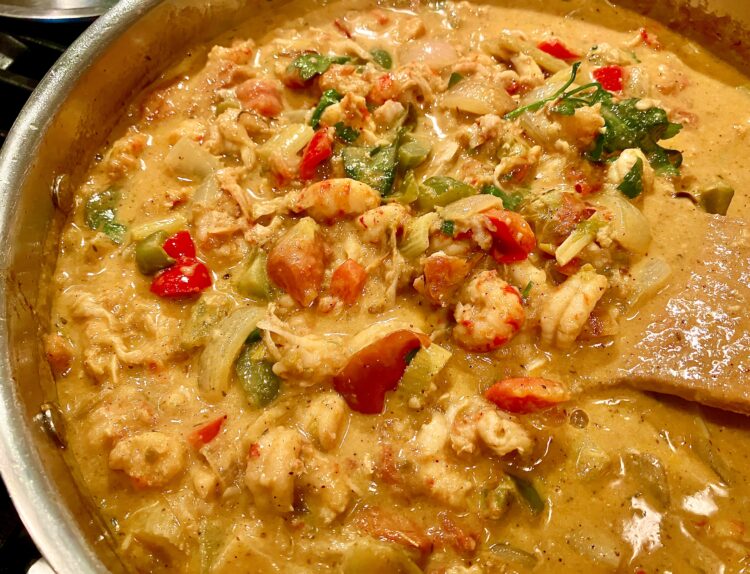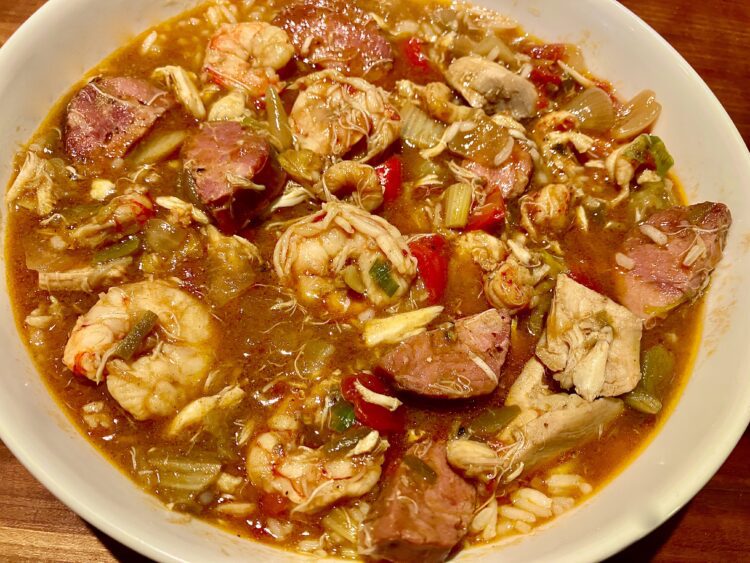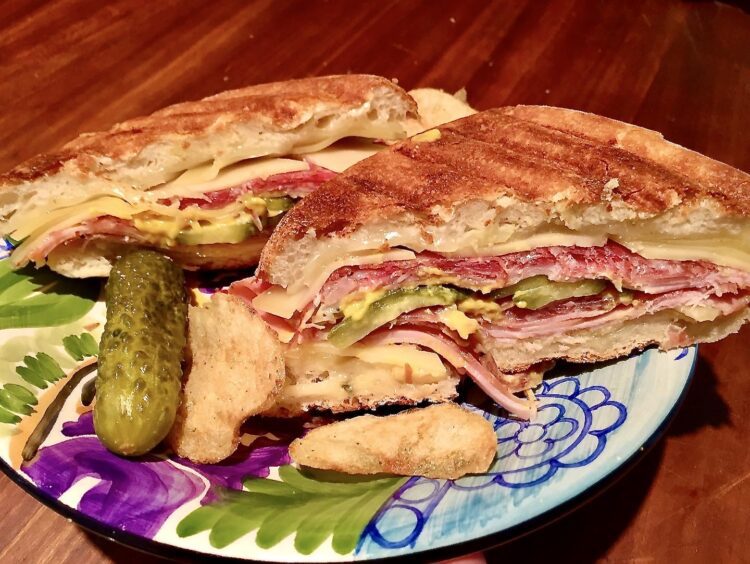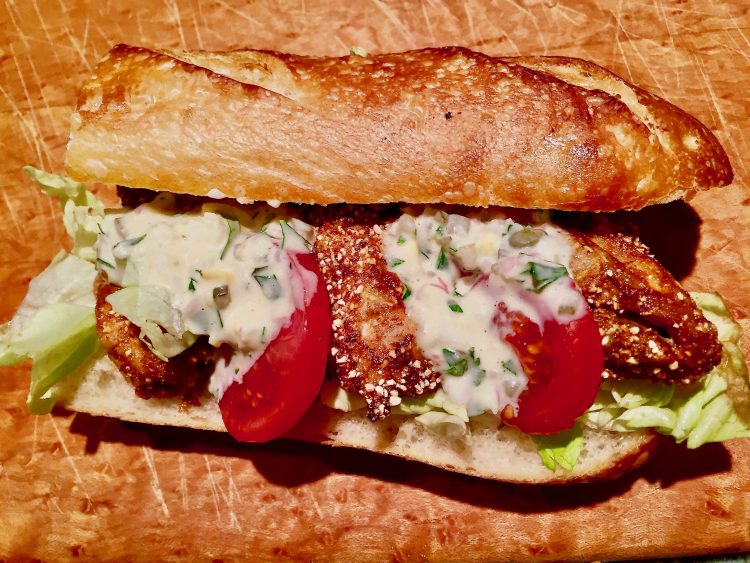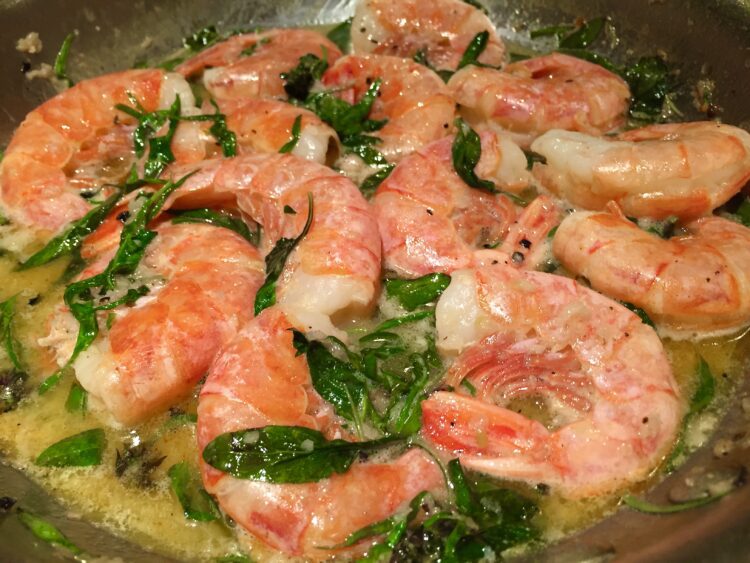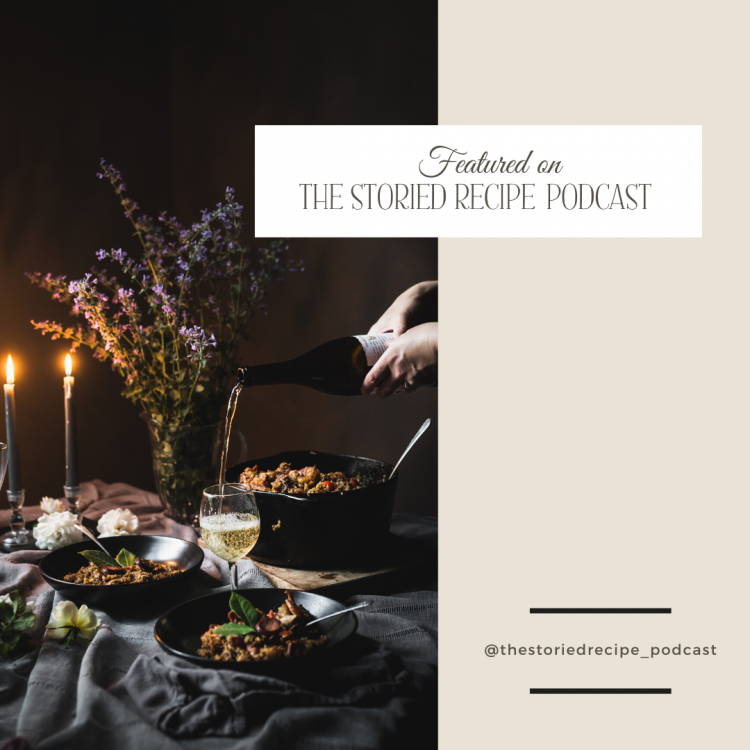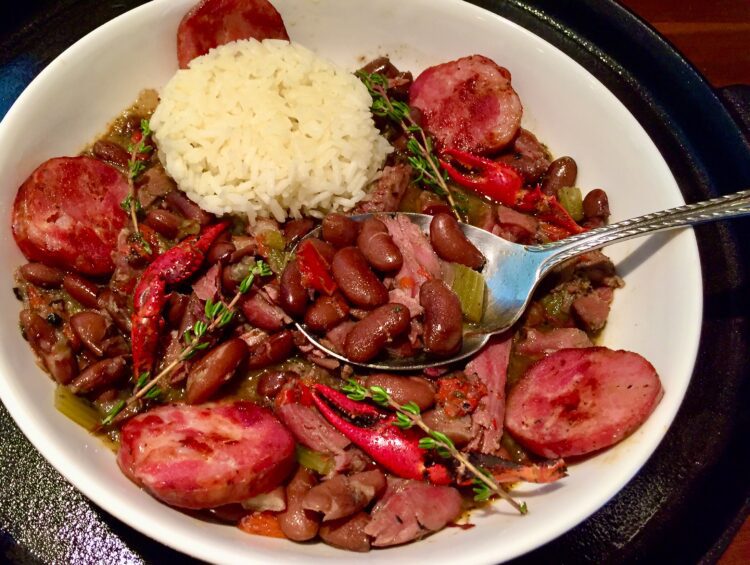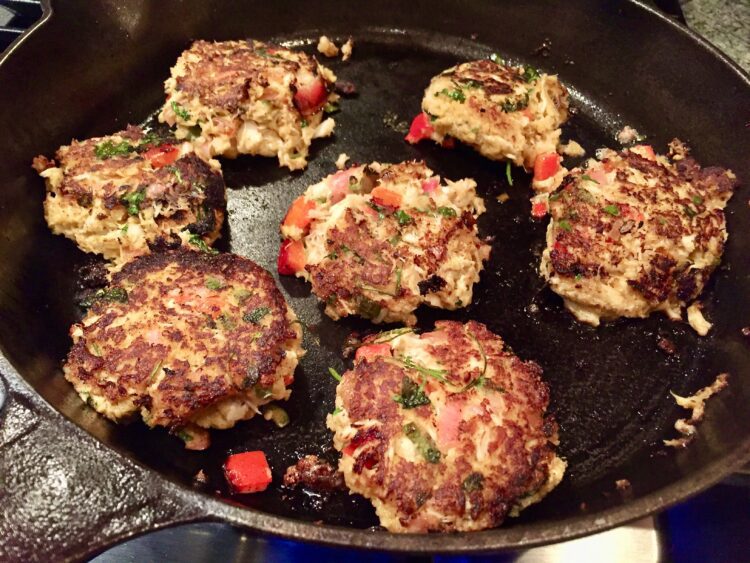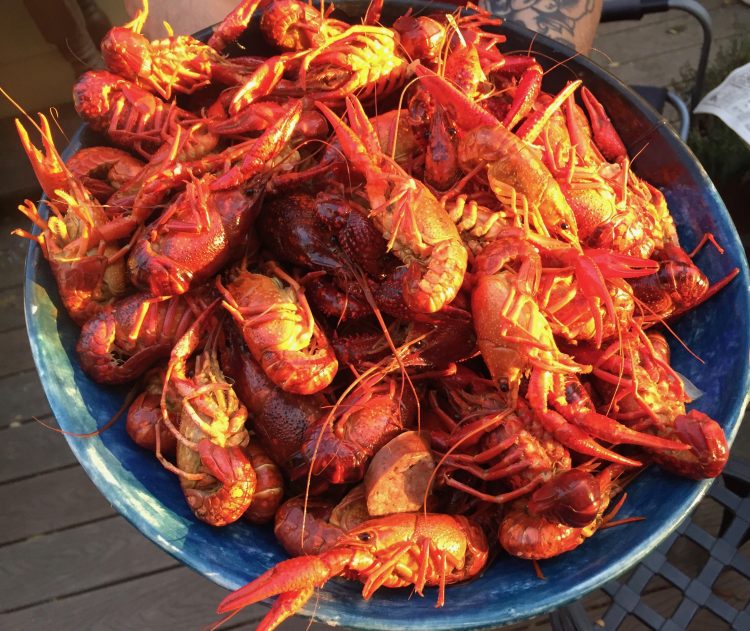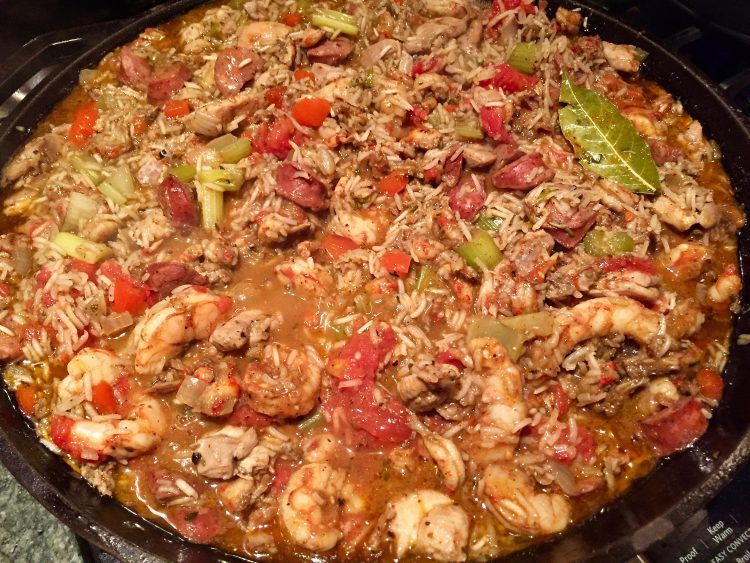I had a close friend who was Cajun and he once took me to a small village in southern Louisiana where he grew up, not too far from the town of St. Martinville, famous for the statue of Evangeline, the High Priestess of myth and poetic legend among the Cajun and a powerful symbol of the Acadian diaspora. (The real person’s name was Emmeline Labiche, and the truth is better than Romeo and Juliet, but that’s a story for the next cookbook.) I had written about the Cajun people in a novel so I was familiar with their culture, food and society. One reason for my passion for Cajun food is that my mother’s side of the family has roots in the French Canadian community of Acadia and thus are the remnants of the Acadian people, who were cast out of their homes and lands by the English army in 1755 to wander unwanted along the Eastern seaboard of America for decades. They finally found a home in the bayous of Louisiana, so it’s completely understandable that traditionally the Cajuns are a people who wanted to be left in peace.
New Orleans
Gumbo Ya Ya
The Cajun people of Louisiana have a long, proud and emotionally powerful history and tradition… and they are a strong part of my Mother’s side of the family. She was French-Canadian, and was born within the bloodline of the Acadian people.
Cuban Sandwich
I go deep-sea fishing in Key West just about every year and that’s where we first discovered one of the greatest sandwiches on planet Earth… the Cuban Sandwich. Since the 1800’s, there were a great many Cuban workers in Key West in the cigar factories, and this was their favorite go-to lunch. And since Cuba is only about ninety miles away, families sailed back and forth with ease to Kew West for more than a hundred years. Most folks in Key West claim the Cuban sandwich originated right there, although the folks in Tampa and Miami would probably beg to differ. But one thing is for sure… I often heard an old expression… “the Cuban sandwich was born in Cuba and educated in Key West”.
New Orleans Oyster Po’ Boys
We usually wolf down our po’ boys right there in the kitchen near the stove, hot and spicy, the oysters crunchy on the outside and creamy on the inside, and the tartar sauce all over our fingers.
Shrimp Scampi
This dish is a real classic and very popular in restaurants all over the world. As always with Italian dishes, Scampi requires the highest quality ingredients to be really memorable. Here in our wild savory kitchen, we are always looking to find the most umami flavors possible, along with the most authentic ingredients. We have always felt that the usual Shrimp Scampi you would be served in a restaurant… which is generally just lots of butter, garlic and Italian parsley… wasn’t explosive enough in taste. We wanted to make a memorable version… and this is it.
New Podcast Now Live
We were recently interviewed as a guest on The Storied Recipe and our episode went live today!! Here’s what the host, Becky Hadeed, had to say about the episode and the highlights of our interview… “John and Rebekah are both Emmy-award winning screenwriters. They are parents to 4 children, doting grandparents, and absolutely passionate home cooks. In fact, I think they’re the most passionate home cooks I’ve ever met. John and Rebekah believe feasting together is the path to “creating family”. While Rebekah uses inspiration and solid know-how to use up leftovers in exciting, delicious ways, John takes a meticulously researched approach to his cooking. They combined their gifts, styles, and experiences to self-publish a cookbook titled Our Wild Savory Kitchen. Today, they’re sharing John’s jambalaya recipe, born one magical evening in the Bayou, perfected in long conversations with famed chef Paul Prudhomme, and now enjoyed together by Paul, Rebekah, and their children as a way of celebrating life and, as they say, “creating family”. Highlights •Home cooking is “making family” •How food brought John and Rebekah together and how they catered their own wedding •Memories from a garden •Cooking and the creative/writing process •John and Rebekah’s different approaches to cooking •A magical night in the Bayou followed by magical lunches with famed chef, Paul Prudhomme •A history lesson on Cajuns and Cajun cooking •John and Rebekah’s approach to sourcing the very best and most authentic ingredients You can listen to it several ways: From The Storied Recipe Website: In Apple Podcasts https://podcasts.apple.com/us/podcast/episode-028-time-in-kitchen-what-we-will-remember-always/id1482179289?i=1000478287502 Or simply search for The Storied Recipe in any podcast player Thanks for listening! John and Rebekah
Creole Red Beans and Rice with Andouille Sausage
In many way, the Creoles of New Orleans may be the most quintessentially American society of all, the original American fusion. Comprised of the descendants of the French and Spanish who were born in Louisiana, it later came to include all races and cultures that shared this general background. They were always a highly sophisticated people, many educated in Paris. The Creole opened the French Opera house in 1859, and the city of New Orleans became the opera capital of America. When we think of this meal, Red Beans and Rice, we imagine the steamy languid Sundays of the Creole world of New Orleans in the 1800’s, ham on the table and French wine to accompany that. And then on Monday, which was called Laundry Day throughout the South, they used the scraps and bones from Sunday’s ham feast, tossed in some Red Beans and seasoning, and as it bubbled for hours, the tedious laundry work was accomplished along with a savory lunch.
Crab Cakes
For this classic Americana feast, we use chunks of Blue Crab or our local Dungeness Crab, juicy red bell peppers, Dijon or Cajun mustard, capers, Italian parsley, and aromatic herbs and spices with a Cajun twist. These babies are Umami Bomb! And perfect for all family gatherings, weekend events and holidays. This is one of our most popular dishes. And everyone who loves crab cakes eventually gets to the big question… which are the best ones in America? For us, it comes down to two candidates… Commander’s Palace in New Orleans… and some dive we stumbled into along the Chesapeake Bay in Maryland. They are very different but both were so incredible that the memory of them is indelible.
Cajun Crawfish Pie
I had a close friend who was Cajun and he once took me to a small village in southern Louisiana where he grew up, not too far from the town of St. Martinville, famous for the statue of Evangeline, the High Priestess of myth and poetic legend among the Cajun and a powerful symbol of the Acadian diaspora. (The real person’s name was Emmeline Labiche, and the truth is better than Romeo and Juliet, but that’s a story for the next cookbook.) I had written about the Cajun people in a novel so I was familiar with their culture, food and society. One reason for my passion for Cajun food is that my mother’s side of the family has roots in the French Canadian community and thus…
Jambalaya
Jambalaya is illusive at its heart. It is, in essence, a rice meal… but that’s just the canvas the Creoles and the Cajuns use to paint one of their masterpieces. The rice is there to absorb all the umami juices of the meats and shellfish and seasoning, and in some ways, this meal is the coming together of the two traditional factions of the Cajun people, the Rice Cajuns and the Bayou Cajuns. The Rice Cajuns are those folks who, early on in their resettlement, were able to acquire slightly higher land in the interior, on which rice flourishes. For the folks living on these farms, pork and chicken were just as likely to be on the dinner table as Mud Bugs, turtles and shrimp, which the Bayou Cajuns netted for a living. So Jambalaya is a meal that combines all the traditional strengths of the Cajun people, and finding the authentic ingredients is crucial.
